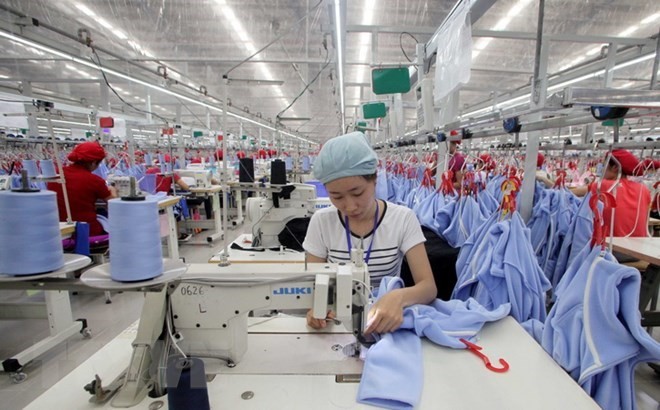
The Republic of Korea is the largest investor with total investment exceeding 4.4 billion USD, followed by Taiwan (China) with US$2.5 billion, Hong Kong (China) with 2.1 billion USD, and Japan with US$789 million.
Earlier this year, Japan’s ITOCHU Corporation splashed out US$47 million on purchasing an additional 10 percent of the Vietnam National Textile and Garment Group (Vinatex). The purchase raised ITOCHU’s stake in Vinatex to 15 percent, making it the second-largest stakeholder after the Ministry of Industry and Trade.
Vinatex operates 200 member enterprises nationwide and is exporting various kinds of products with high added value. ITOCHU’s deeper engagement in the Vietnamese group will bolster Vinatex’s export revenue, including revenue gained in Japan.
Notably, the garment and textile sector has lured many large scale foreign direct investment projects, including the US$80-million Nam Dinh Ramatex Textile and Garment Factory by Singapore, and US$80-million Ha Nam YKK Factory specialised in producing zippers and other materials for the garment industry.
Giang said that low labour costs coupled with free trade agreements, including the Comprehensive and Progressive Agreement for Trans-Pacific Partnership (CPTPP), have made the Vietnamese garment and textile sector alluring to foreign investors.
Once the CPTPP takes effect, Vietnam can increase shipments to CPTPP member countries, which spend up to US$40 billion on garment and textile products every year.
However, to attract more foreign investment, the Government and the Ministry of Industry and Trade should devise stable policies, and pen a strategy for the garment and textile, with the construction of industrial parks meeting international standards on wastewater treatment key, he underlined.
Earlier this year, Japan’s ITOCHU Corporation splashed out US$47 million on purchasing an additional 10 percent of the Vietnam National Textile and Garment Group (Vinatex). The purchase raised ITOCHU’s stake in Vinatex to 15 percent, making it the second-largest stakeholder after the Ministry of Industry and Trade.
Vinatex operates 200 member enterprises nationwide and is exporting various kinds of products with high added value. ITOCHU’s deeper engagement in the Vietnamese group will bolster Vinatex’s export revenue, including revenue gained in Japan.
Notably, the garment and textile sector has lured many large scale foreign direct investment projects, including the US$80-million Nam Dinh Ramatex Textile and Garment Factory by Singapore, and US$80-million Ha Nam YKK Factory specialised in producing zippers and other materials for the garment industry.
Giang said that low labour costs coupled with free trade agreements, including the Comprehensive and Progressive Agreement for Trans-Pacific Partnership (CPTPP), have made the Vietnamese garment and textile sector alluring to foreign investors.
Once the CPTPP takes effect, Vietnam can increase shipments to CPTPP member countries, which spend up to US$40 billion on garment and textile products every year.
However, to attract more foreign investment, the Government and the Ministry of Industry and Trade should devise stable policies, and pen a strategy for the garment and textile, with the construction of industrial parks meeting international standards on wastewater treatment key, he underlined.
























